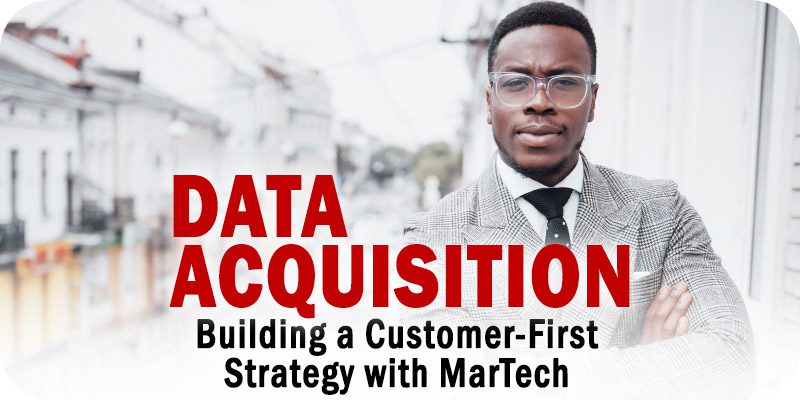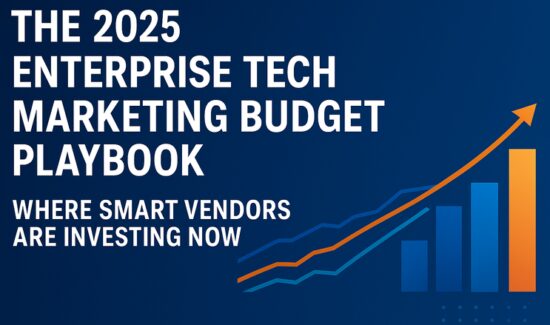Data Done Right: Building a Customer-First Data Acquisition Strategy with MarTech


As part of Solutions Review’s Contributed Content Series—a collection of articles written by industry thought leaders in maturing software categories—Steve Shaw, the Chief Product and Technology Officer of Dotdigital, shares some insights on developing data acquisition strategies that put the customer first.
User data has become a hot-button issue, from targeted ads to increased phishing scams and leaks. Headlines are seemingly consumed by significant data breaches, changes in cookie support, and debates over privacy regulations. Additionally, big tech’s failure to protect data—as exemplified by the Facebook and Cambridge Analytica scandal—does nothing to make acquiring data easier or less daunting, as consumers are more skeptical than ever about handing over their information.
These sentiments were reflected in a recent survey of over 2,000 consumers:
- 81 percent of respondents refuse to do business with a brand they find untrustworthy.
- 51 percent claimed they are more aware of how brands use their data since they shop online more post-COVID.
- 56 percent stated they had become more mistrustful of how companies utilized their data over the last year.
For marketers, these percentages are concerning. Data is the fuel behind a rich, personalized customer journey, and these sentiments will significantly impact your data strategy and the marketing technology platforms you work with.
Before illustrating what an ethical data acquisition strategy looks like in the digital world, visualize the following: You’re a regular at your favorite sandwich shop. You order your go-to: a turkey club on wheat—extra mustard. Occasionally, you might venture out and try the latest special, but the turkey club on wheat with extra mustard is your tried and true. The store associate asks you (along with other regulars) to fill out a short survey with your ingredient preferences so they know what stock to keep ordering. A good value exchange for this data would result in them continuing to order your favorite ingredients or knowing your preferences off-hand for your next visit, saving you time. The gathering of this information was both context-aware and consensual.
Alternatively, if they got rid of your preferred ingredients and started a conversation about something personal, that could be off-putting. You might be left wondering why they asked for your time in the first place and leave feeling annoyed enough not to return. Unfortunately, this is too common because of thoughtless and unnecessary data capturing.
Understanding Customer-Centered Strategies
First and foremost, zero and first-party data collection should be the default. This allows for a consensual exchange of information—a key to gathering relevant and useable customer insight. This can be done through gamification tactics like coupon codes, early-entry offers, and other incentives that provide value. These strategies also allow for progressive profiling, making space to build trusted and quality data collection over time.
As these points are collected, it’s critical to bring them together to create profile unification—an organized, central gathering of information to avoid unnecessary and duplicate efforts. In conjunction, consent management (the ability to unsubscribe, opt-in, and otherwise) will build consumer trust, keep your database accurate, and allow progressive profiling opportunities.
Once these foundational pieces are incorporated into your strategy, it’s time to assess the orchestration of the customer journey. This includes mapping out how you communicate with your audience and planning how to utilize the gathered data to generate the best possible consumer experience. These strategies aim to ultimately engage in conversational marketing—a point at which a brand is essentially having a personalized, timely, consistent digital conversation with its audience.
Choose Your Marketing Technology Providers Carefully
When deciding what marketing technology platforms your organization engages with, consider the following foundational pillars: best practices, privacy and security, and sustainability.
- Best Practice: Providers who set a thoughtful standard rather than abiding by what’s legal.
- Privacy and Security: Ensure you research and understand how secure the technology is—remember, this is foundational to building consumer trust!
- Sustainability: Consumers are more thoughtful about who they choose to do business with—prioritize marketing tools that engage in sustainable practices.
Additionally, it would help if you looked for these green MarTech flags:
- Double Opt-In: An automated confirmation email that asks the customer to confirm they wish to receive marketing, ensuring subscribers are fully engaged (especially helpful following the iOS 15 update).
- Live Chat: This channel promotes two-way conversations and can be used to form stronger connections with your audience and allow customers to control the relationship.
- SMS: With a read rate of 98 percent, SMS is an invaluable marketing channel, and opt-out options help keep the customer in control.
Understanding these pillars and capabilities for data acquisition will help set the criteria for your MarTech providers and ultimately allow you to provide a trustworthy and data-rich experience. The fundamentals of the customer experience—price point, speed, delivery—are still the priority and shouldn’t be impacted by the implementation of your data strategy. Companies can achieve a strategic and ethical data strategy through context-aware, consensual, valuable, and progressive practices.





















